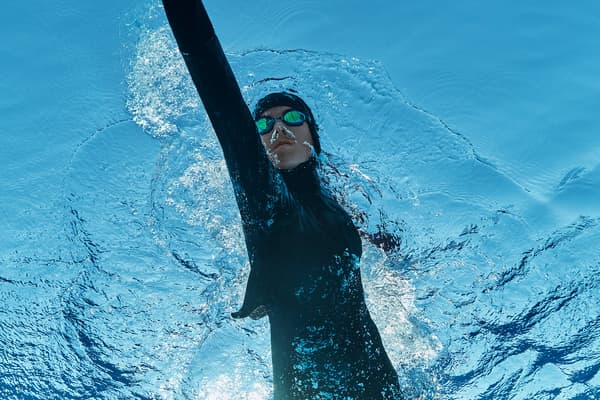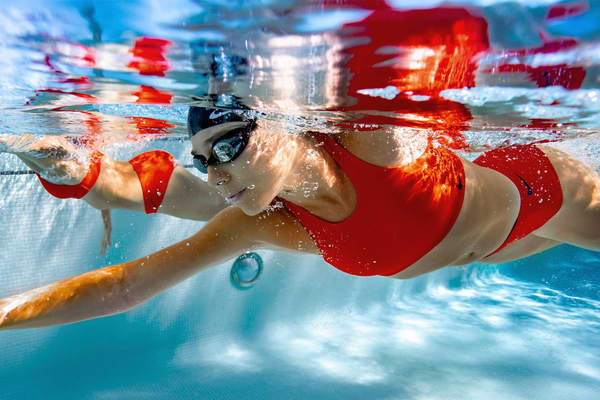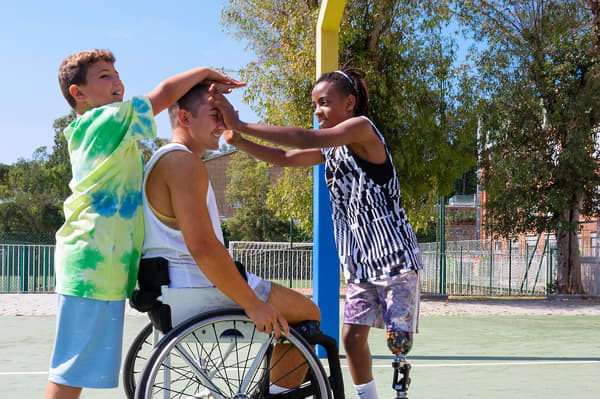Water Aerobics for Beginners: The Best Gear for the Workout
Buying Guide
Check out eight pieces of water aerobics equipment to help improve your workout in the pool, according to a water aerobics instructor.

Water workouts can be beneficial for many reasons—they're a low- to no-impact form of exercise that takes pressure off the joints and can be a great cross-training option for people looking to give the body a break from high-impact sports like running.
Water aerobics involves performing aerobic (or cardio) exercises in the water, including variations of dry-land cardio exercises such as walking, star jumps and arm or leg lifts. Water aerobics can also serve as a form of resistance training. Water creates more resistance than air does, so doing workouts in the water can help build strength and endurance while lessening impact on the joints.
"Bear in mind, you create your resistance level for the most part", said Courtney Virden, a water aerobics instructor in Calabasas, California. "So if you move slowly, you will not have a lot of resistance, and if you move quickly, you will create an enormous amount of resistance".
To get the most out of a session in the pool, Virden recommends using certain pieces of water aerobics equipment to make a workout more challenging. Check out Virden's recommendations for fun and functional equipment to keep your water workouts interesting (and effective).
8 Equipment Essentials for Water Aerobics
1. Swimsuit
First things first: suit up with a piece of performance swimwear to get ready for your water workout. Nike offers a range of swimsuit options for men and women, including one-piece swimming costumes, bikinis, swimming trunks, jammers and swimming briefs. For added sun protection, pair your swimsuit with a hydroguard swimming top—and be sure to wear sun cream on any exposed skin.
2. Flotation Belt
Many runners (or other athletes playing high-impact sports) become familiar with pool running after experiencing an injury. Pool running is a low-impact alternative to running on the roads, and it can be a beneficial part of injury recovery and rehabilitation.
"Wearing a [flotation] belt enables you to float in the deep end, and with many exercises, you will have to use your deep abdominals to stay upright", Virden said. "It also allows you to do more dynamic movements in the water".
In addition to pool running and walking, you can try doing plyometrics. This type of training is meant to help build power and explosiveness, and it involves jumping to exert maximum force in short intervals of time. On land, plyometric jumps put pressure on the joints, but in water, you can do them without stressing the body.
"You can do plyometric jumps in the shallow end, and walk or run in the shallow end or in the deep end wearing a flotation belt", Virden added. "All levels can do [plyometrics], and a beginner would simply have less explosiveness than someone who has been jump training. The water is beneficial for greatly reducing impact on your joints when jumping".
3. Hand Weights
Pool hand weights add more resistance to exercises, which can help build strength and endurance when working out in the water, Virden said. You can do moves such as basic rows, front strides and biceps curls with weights. Virden recommended getting creative and recreating exercises you do outside the pool when you're in the water, using the weights to help make the workout more challenging (if that's your goal).
4. Swimming Boots
Swimming boots are another form of weights that Virden recommended using during pool workouts. Since they're worn on the feet, they add resistance to strengthen the lower body, providing similar benefits as pool hand weights do for the upper body.
As with hand-weight or bodyweight exercises, the faster you perform an exercise with swimming boots on, the more resistance you'll create in the water—just be sure you're applying proper technique when you speed things up.
5. Kickboard
If you don't have a flotation belt but have access to a kickboard, it can be an effective tool for strengthening the leg muscles while still getting an effective cardio workout in the water. Hold the kickboard in front of you while kicking to propel yourself forwards in the water.
6. Swimming Cap
A swimming cap is a useful accessory for water aerobics, because it helps stop chlorine from damaging your hair and can keep loose hair out of your face and the pool. Nike offers several options for silicone swimming caps in different colours.
RELATED: How to Put on a Swimming Cap
7. Swimming Locker Bag
A swimming locker bag is a must-have accessory for transporting all your water aerobics equipment to and from the pool. Nike offers a variety of swimming and locker bags in different colours and patterns, and they're perforated to allow for water drainage. Your swimsuit, towel and other items can dry, even when stored in the bag.
8. Swimming Goggles
Goggles help keep water out of the eyes, and some pairs with mirrored lenses help reduce glare and UV rays in bright conditions. If you plan to keep your head above water for a workout, you may not need goggles, but it's a good idea to have them on hand in case you swim underwater during the workout.
Words by Emilia Benton




